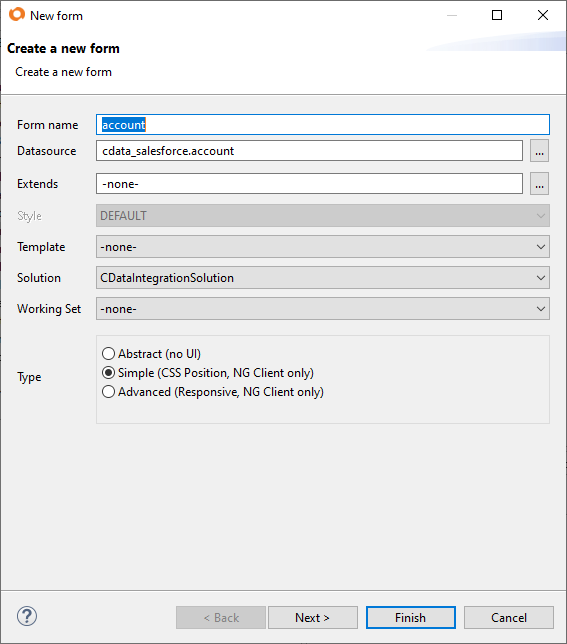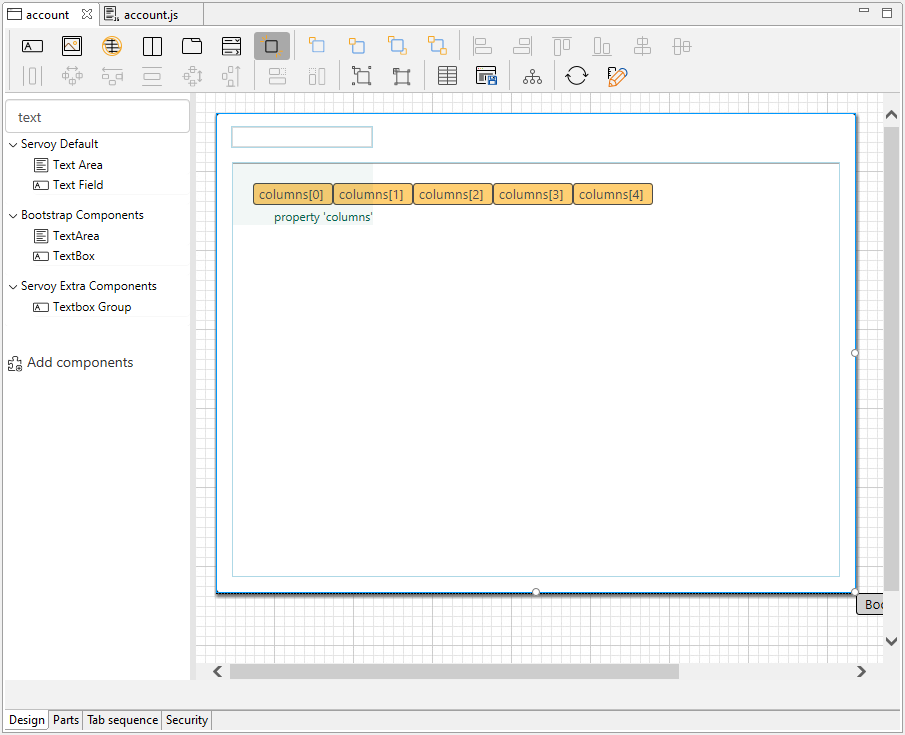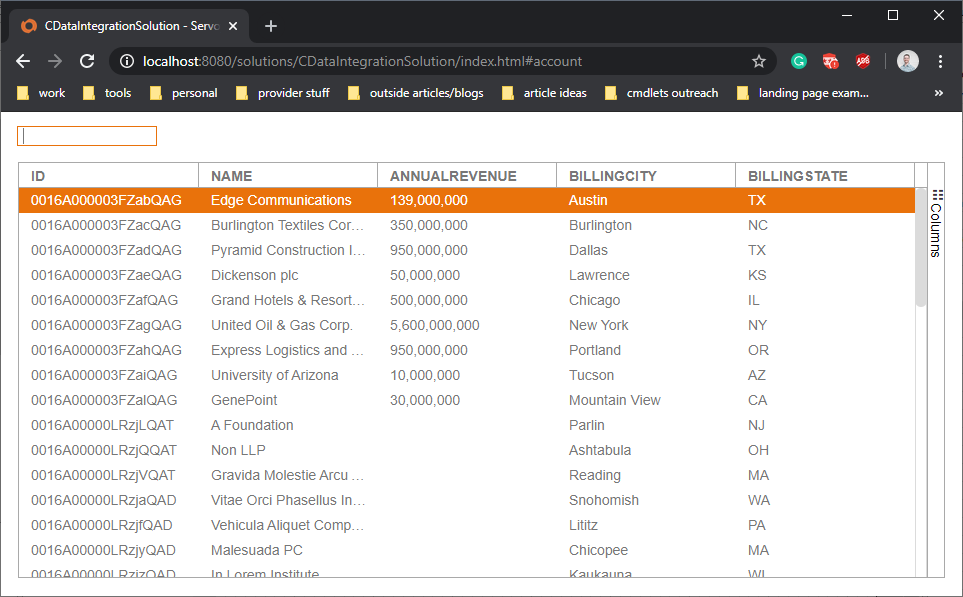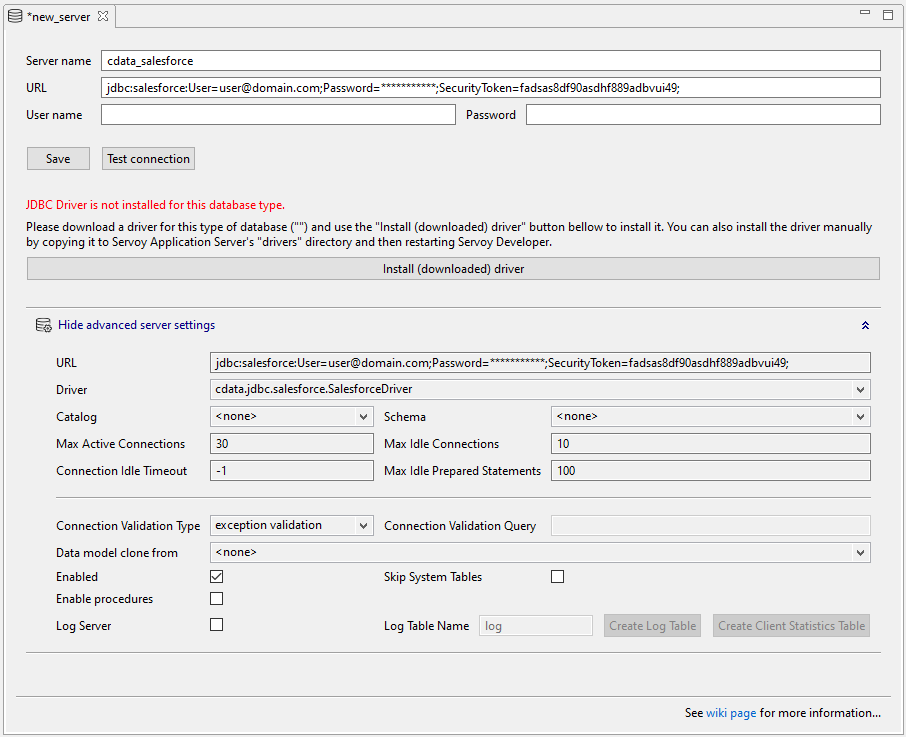Model Context Protocol (MCP) finally gives AI models a way to access the business data needed to make them really useful at work. CData MCP Servers have the depth and performance to make sure AI has access to all of the answers.
Try them now for free →Build Jira-Connected Web Apps in Servoy
Use Servoy Developer to easily connect to Jira data and build web apps with connectivity to live Jira data.
Servoy is a rapid application development and deployment platform. When paired with the CData JDBC Driver for Jira, users can build Jira-connected apps that work with live Jira data. This article describes how to connect to Jira from Servoy and build a simple web app to display and search Jira data.
With built-in optimized data processing, the CData JDBC Driver offers unmatched performance for interacting with live Jira data. When you issue complex SQL queries to Jira, the driver pushes supported SQL operations, like filters and aggregations, directly to Jira and utilizes the embedded SQL engine to process unsupported operations client-side (often SQL functions and JOIN operations). Its built-in dynamic metadata querying lets you work with Jira data using native data types.
About Jira Data Integration
CData simplifies access and integration of live Jira data. Our customers leverage CData connectivity to:
- Gain bi-directional access to their Jira objects like issues, projects, and workflows.
- Use SQL stored procedures to perform functional actions like changing issues status, creating custom fields, download or uploading an attachment, modifying or retrieving time tracking settings, and more.
- Authenticate securely using a variety of methods, including username and password, OAuth, personal access token, API token, Crowd or OKTA SSO, LDAP, and more.
Most users leverage CData solutions to integrate Jira data with their database or data warehouse, whether that's using CData Sync directly or relying on CData's compatibility with platforms like SSIS or Azure Data Factory. Others are looking to get analytics and reporting on live Jira data from preferred analytics tools like Tableau and Power BI.
Learn more about how customers are seamlessly connecting to their Jira data to solve business problems from our blog: Drivers in Focus: Collaboration Tools.
Getting Started
Connect to Jira in Servoy Developer
To build Jira-connected apps, you need to first create a data provider in Servoy Developer using the CData JDBC Driver for Jira.
- Install the JDBC Driver.
- Copy the JDBC Driver JAR file. (cdata.jdbc.jira.jar) to the /application_server/drivers/ directory in the installation directory for Servoy.
- Open Servoy Developer.
- In the Solution Explorer, right-click Database Server (under Resources) and choose "Connect to existing database" -> "empty."
- Name the server.
- Click to show the advanced server settings.
Set the URL, for example: jdbc:jira:User=admin;Password=123abc;Url=https://yoursitename.atlassian.net;
Built-In Connection String Designer
For assistance in constructing the JDBC URL, use the connection string designer built into the Jira JDBC Driver. Either double-click the JAR file or execute the jar file from the command-line.
java -jar cdata.jdbc.jira.jarFill in the connection properties and copy the connection string to the clipboard.
To connect to JIRA, provide the User and Password. Additionally, provide the Url; for example, https://yoursitename.atlassian.net.
![Using the built-in connection string designer to generate a JDBC URL (Salesforce is shown.)]()
- Select the Driver class you just copied, for example, cdata.jdbc.jira.JIRADriver
![Connecting to data through the JDBC Driver (Salesforce is shown).]()
Build a Jira-Connected Web App
Once you have configured the connection to Jira in the Servoy Developer resources, you are ready to build apps with access to live Jira data.
Create a New Solution
- In the Server Explorer, right-click "All solutions" and select "Create new solution."
- Name the solution.
- Select the checkbox to include the "search" module.
- Click "Finish."
Create a New Form
Right-click "Forms" and select "Create new form."
- Name the form.
- Select a Datasource.
- Set the type (e.g., Simple) and click "Finish."

Add a Data Grid to the Form
- Drag a Data Grid component (from Servoy NG-Grids) onto the form.
Drag a column component onto the Data Grid and set the "dataprovider" property for each column component to a column from the Jira "table" (e.g., Summary from the Issues table).
Continue adding columns as desired.
Add Searching to the App
Note that the "svySearch" extension is required to add search functionality (included by default when you create a new solution). If you did not add the extension when you created the solution or you are modifying an existing solution, you can add the search module by right-clicking Modules (in the solution) and selecting "Add Module." Select "svySearch" and click "OK."
- Drag a Text Field component onto the Form.
- Right-click the Form and select "Open in Script Editor."
- Create a new variable (JavaScript) to hold the search value:
var searchText = '';
- Back on the Form, in the Text Field properties:
- Set the "dataprovider" property to the Form variable you just created.
- Double-click to add a method for the onAction event.
- Click to create the method in "Form," name the method (e.g., onEnter), and click "Create private."
- Click "OK & Show."
- Add the following JavaScript to the JavaScript file to use the Servoy framework to implement searching bound data based on the text in the Text Field:
var search = scopes.svySearch.createSimpleSearch(foundset).setSearchText(searchText); search.setSearchAllColumns(); search.loadRecords(foundset);

Save and Launch the App
Save the form and JavaScript file, then click Run -> Launch NGClient to start the web app.

Download a free, 30-day trial of the CData JDBC Driver for Jira and start building Jira-connected apps with Servoy. Reach out to our Support Team if you have any questions.



